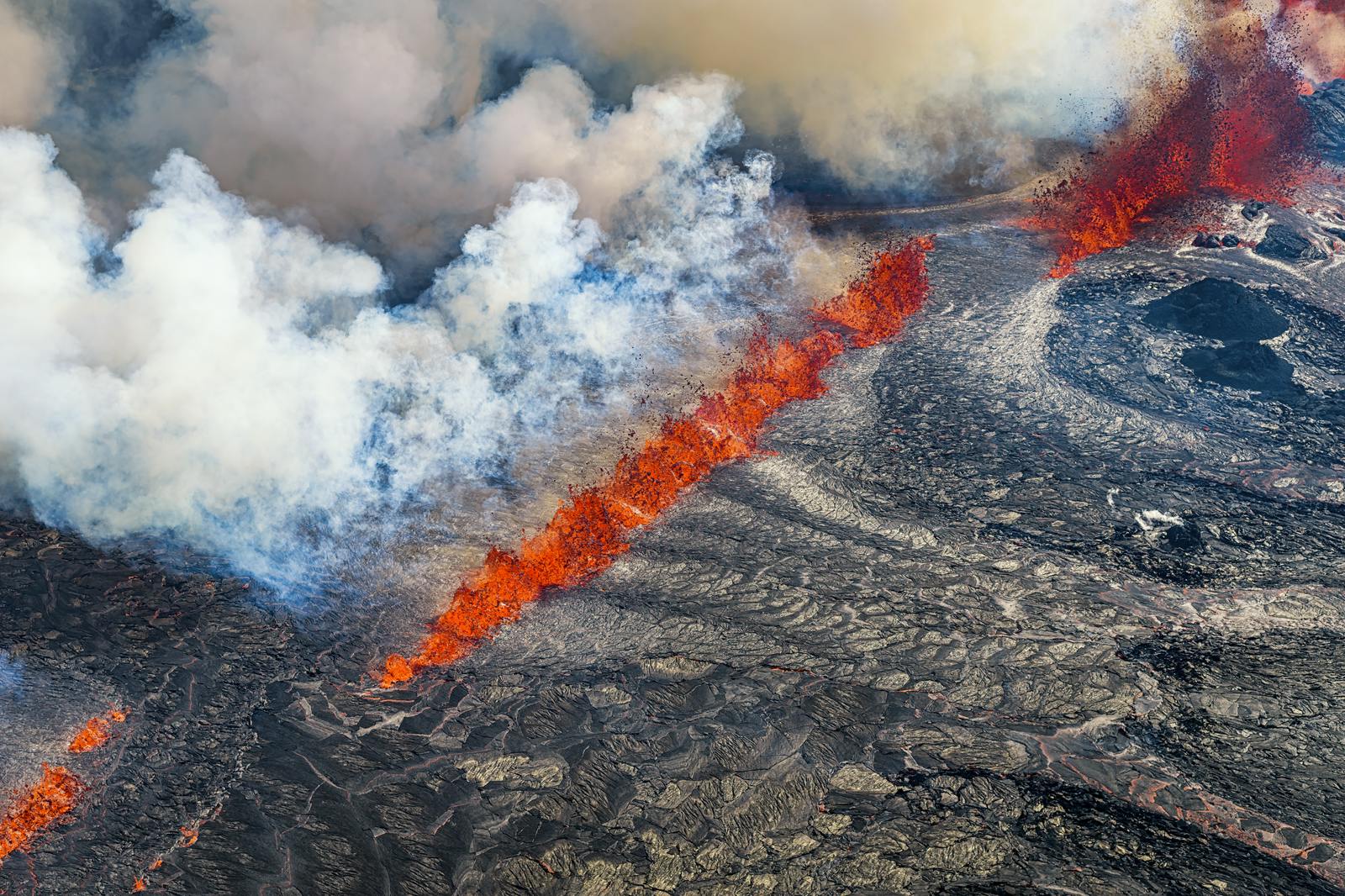
Sundhnúkagígar Volcanic Eruption April 1, 2025 Updates
An intense earthquake swarm began at 6:30 April 1st, 2025 in the Sundhnúkagígar Crater Row, located between the Sýlingarfell and Stóra-Skógfell mountains. The seismic activity occurred in the same area as previous eruptions in this volcanic system.
As a safety measure, the Blue Lagoon was evacuated early in the morning, and evacuation procedures also began in the nearby town of Grindavík. While most residents complied with the evacuation, a few have chosen to remain in their homes.
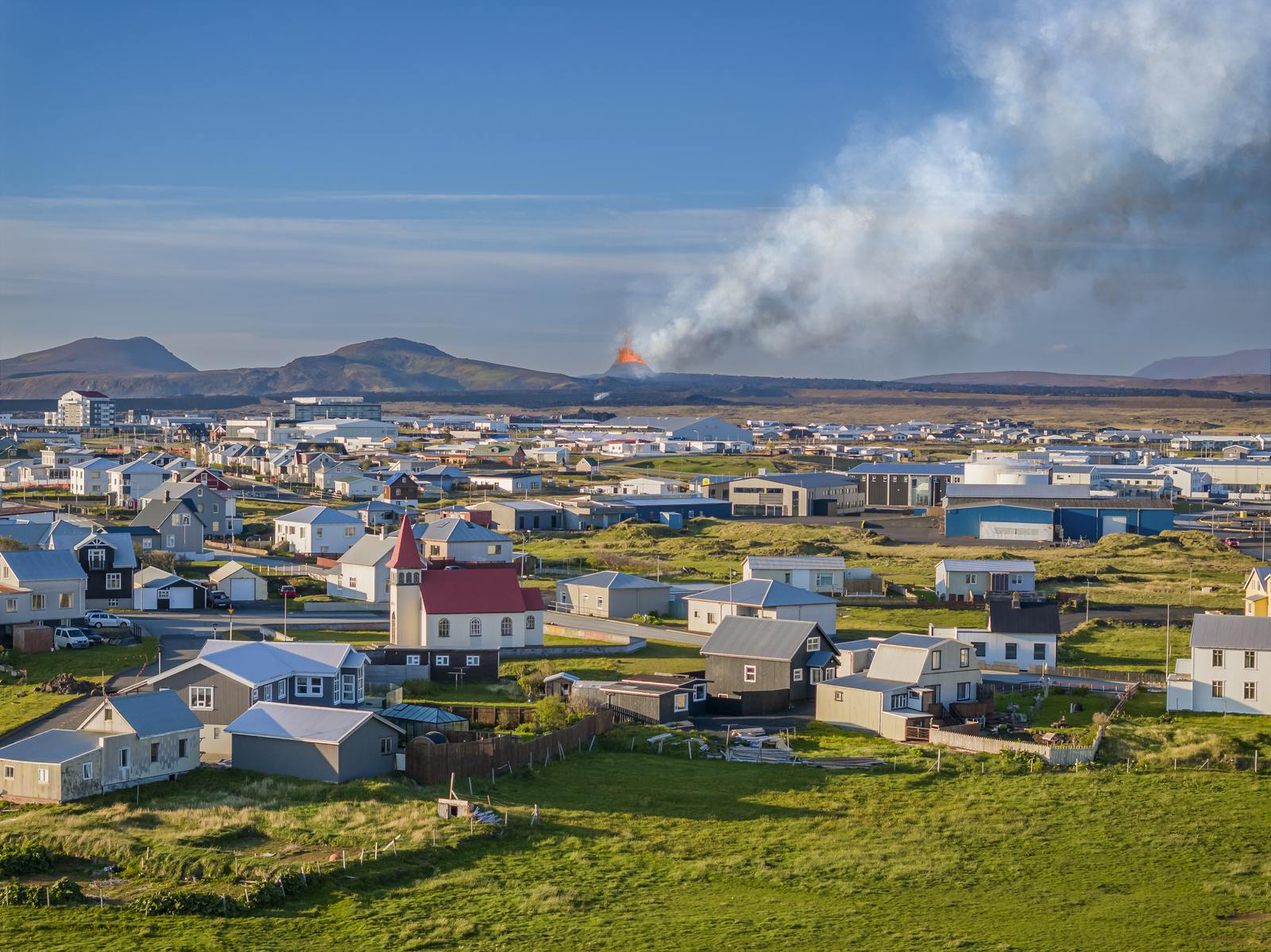
Eruption Confirmed at 9:45 AM
A volcanic eruption has officially started just north of the protective barrier near Grindavík. According to geologists, the magma intrusion (or dike) beneath the Sundhnúkagígar area is approximately 11 kilometers long — the longest measured in the region since November 11, 2023.
✈️ Important: The eruption has no impact on air travel. Flights to and from Keflavík International Airport are operating normally.
This marks the 11th volcanic eruption on the Reykjanes Peninsula since 2021 and the 9th eruption specifically within the Sundhnúkagígar system.
The previous eruption officially ended on December 9, 2023. In recent weeks, measurements showed significant magma accumulation beneath the crater row — more than what was observed before the last eruption.
Fissure Expands
By 10:00 AM, the eruption fissure had breached the northern protective barrier near Grindavík. Since then, the fissure has continued to extend southward, with a new segment opening just a few hundred meters from the town—between the outer defense walls and Grindavík itself. The active fissure is now approximately 1,200 meters long and continues to grow in the direction of the January 2024 eruption site.
The magma surfaced relatively far south within the Sundhnúkagígar Crater Row, bringing it closer to populated areas than in previous eruptions. Authorities are monitoring the development closely, especially as the fissure moves closer to previously active zones.
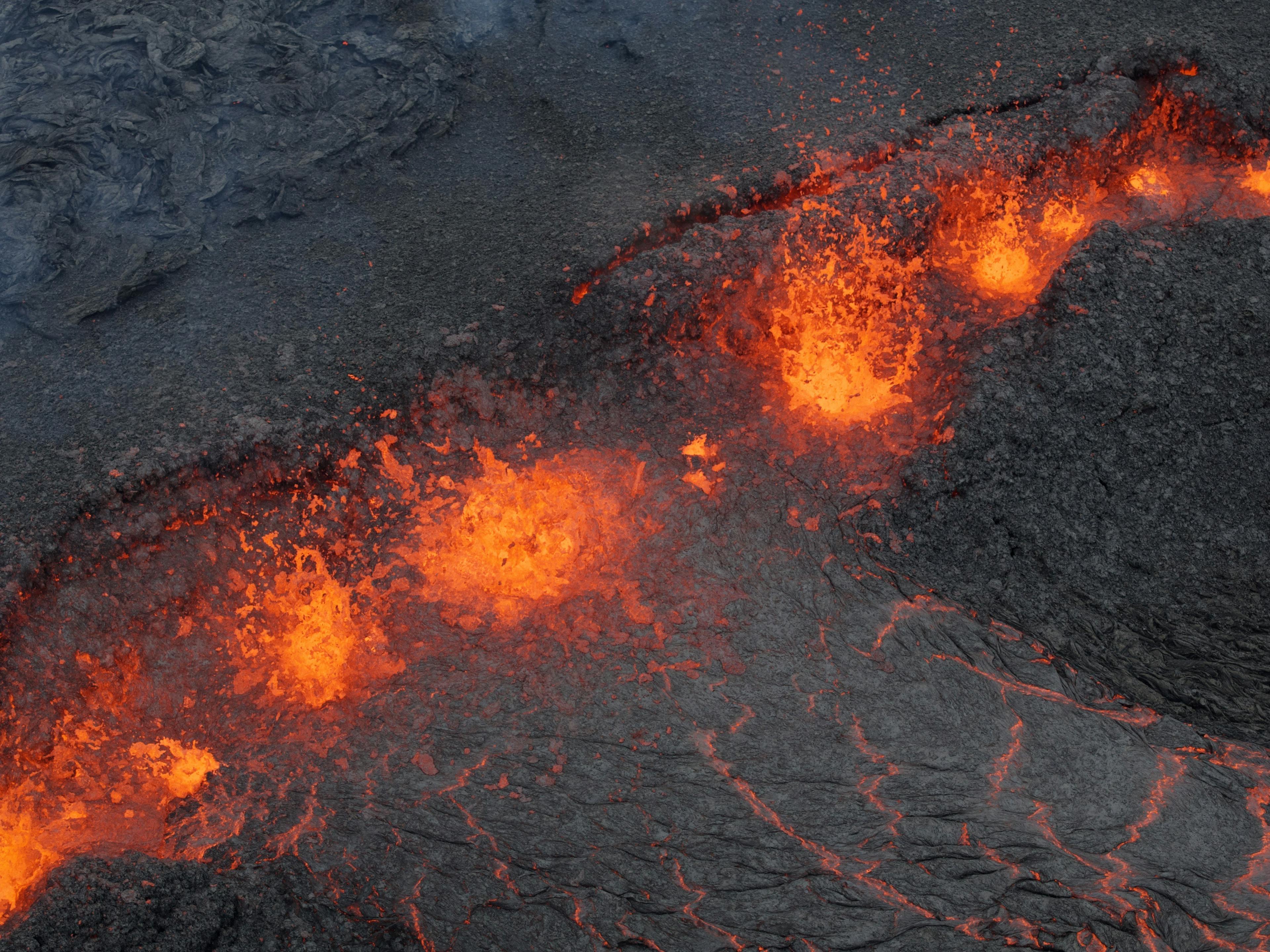
Volcanic Eruptions in Iceland
Volcanic eruptions are a natural and fascinating part of Iceland’s unique landscape, and the Sundhnúkagígar eruption is the latest reminder of the island’s ever-changing geology. Local authorities are closely monitoring the situation, and safety remains the top priority for residents and visitors alike.
If you’re planning a trip to Iceland, know that the country is well-prepared for these events and that travel remains safe and uninterrupted for most of the country.
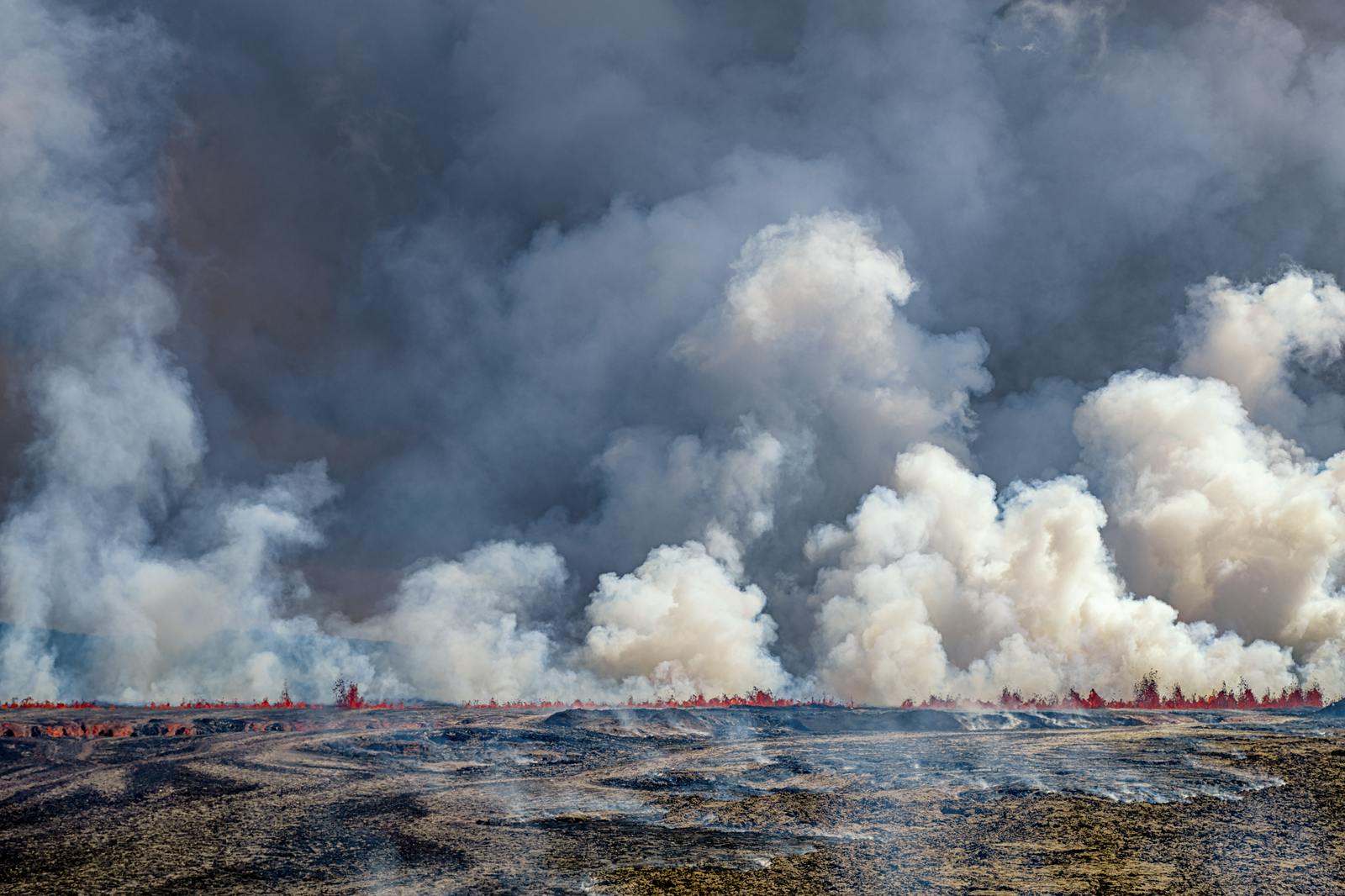
Lava Flow Slows & Craters Begin to Form
Since the eruption began, the lava flow north of Grindavík has gradually decreased. Lava continues to flow from the fissure, both inside and outside the town’s defensive barriers. Small volcanic craters have started forming along the fissure, which now partially obscures the flow and makes it more difficult to assess the full extent of the lava field.
Live camera feeds from the area show only minimal surface activity, with faint glowing spots visible in the lava field and along the fissure that opened earlier in the day.
Seismic Activity Continues in the Reykjanes Peninsula
Despite the visible decrease in volcanic activity, seismic activity in the area remains high. Most earthquakes are occurring in the northern section of the magma dike that formed earlier in the day. Deformation measurements also indicate ongoing ground movement to the northeast, which suggests that magma is still flowing underground into the dike.
In total, seismic activity has been measured across a zone stretching roughly 20 kilometres—from the southern end of the eruption fissure to the northernmost point of current earthquake activity.
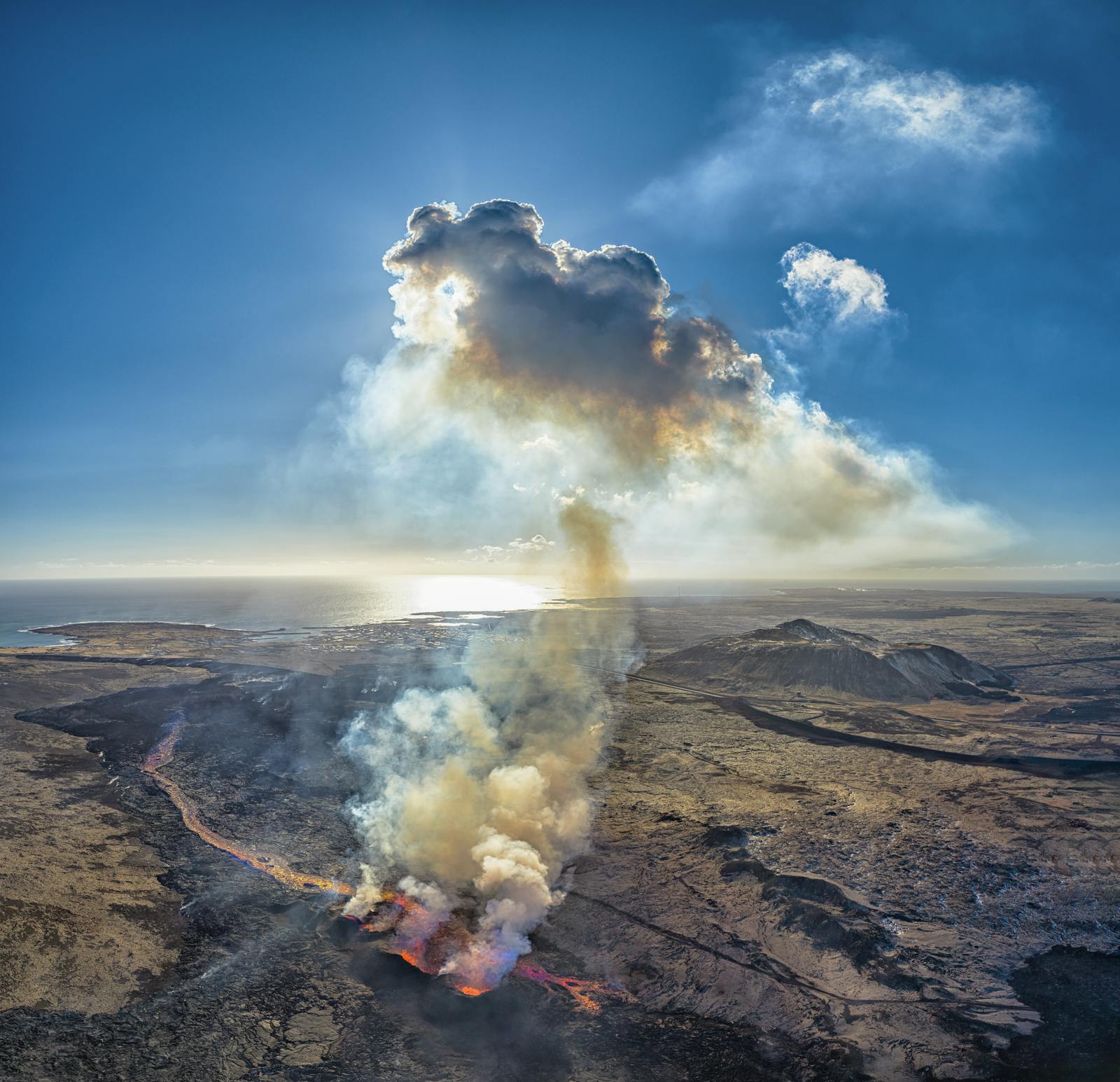
A Smaller Eruption Than January 2024?
As the lava flow has slowed considerably, and there is no visible forward movement of new lava. Based on current assessments, this event may be even smaller than the January 2024 eruption, which was already the smallest in the recent eruption cycle in the area, producing around three million cubic meters of lava.
That said, experts at the Icelandic Meteorological Office emphasise that the fissure remains active, and it is still possible for new vents or craters to open.
Iceland is home to numerous volcanic systems, many of which have shown increased activity in recent years. Learn more about active volcanoes in Iceland and how they shape the country’s dynamic landscape.







